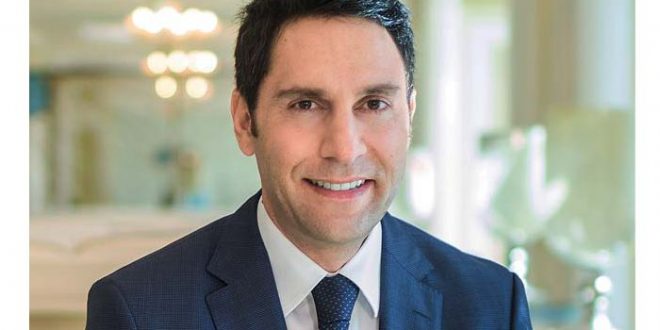Ras Al Khaimah is aggressively enhancing its presence in India through strategic partnerships, and is intensifying its focus on adventure tourism in line with UNWTO’s Year of Sustainable Tourism for Development, reveals Haitham Mattar, CEO, Ras Al Khaimah Tourism Development Authority (TDA)
AHANA GURUNG
Q Ras Al Khaimah has been actively promoting the destination in the Indian travel trade. Have the efforts reflected in the Indian tourist arrivals? Ras Al Khaimah is now widely recognised as one of the most rapidly developing tourism sectors in the UAE. The northern emirate recorded a 28 per cent rise in Indian hotel guests in 2016 when compared to 2015. With India ranked as the emirate’s fourth largest international source market, RAKTDA has seen extensive trade and promotional activities to ensure continued growth from the Subcontinent. To strengthen our presence in the market, we have also formed new strategic partnerships with India’s leading tour operators and have partnered with Cox & Kings and TUI. Additionally, Ras Al Khaimah has proven to be a popular destination for Indian weddings.
Q What are the driving factors for the overall growth? As the destination’s diverse tourism offering continues to mature, the last 12 months saw a series of significant developments in the adventure tourism segment and the hosting of international sporting events like the Ras Al Khaimah 2016 Golf Challenge, and conferences. Collectively, our achievements stimulated increased visitor numbers from both established source markets and emerging ones. Ras Al Khaimah’s four largest international source markets (including India) each recorded double digit year-on-year growth in 2016, with German visitors up 24.6 per cent last year and now contributing one in 10 of all visitors to the emirate. The UK and Russia also reported similar visitor increases of 35 per cent and 19.5 per cent respectively. We are also seeing a surge in growth from Scandinavia and Central Europe. Year-on-year, the UAE continues to remain the most significant source market in terms of visitor numbers, accounting for 41.2 per cent of total visitors to Ras Al Khaimah last year.
Q Since Ras Al Khaimah houses some of the most exclusive hospitality brands, how has the sector fared? I must highlight that Ras Al Khaimah has witnessed a strong hotel performance that withstood increases in hotel supply and changing source market conditions. Key hotel KPIs are growing at a rate which is well above most GCC markets. A 10 per cent increase in occupancy was observed in hotels throughout 2016, reporting an average of 71 per cent from January to December. Similar growth was posted across all key performance indicators with RevPAR increasing by 5.5 per cent year-on-year 2015, while Room Revenue grew 10 per cent. Meanwhile, the emirate’s accommodation portfolio registered four per cent growth in average length of stay, rising from 3.19 days in 2015 to 3.32 days last year.
Q In terms of tourism products, what are some of the key developments in pipeline? The region’s first commercial Via Ferrata (Iron Path) was launched in November 2016 and has been a commercial success. The three-course Via Ferrata spans the rocky facades of Jebel Jais, the country’s highest peak which rises to 6,266 feet and is part of the rugged Al Hajar mountain range where the average climate is 10 degrees Celsius below mean Gulf temperatures. Other product developments in 2017 include the opening of the world’s longest zip line, which was announced last year, and the launch of official cycling and hiking routes across the emirate, with a focus on Jebel Jais, the UAE’s highest mountain peak.
Q Which segments are you particularly targeting? Ras Al Khaimah’s natural and cultural assets are well positioned to target three key high-yield global tourist segments, which are wellness seekers, active adventurers & cultural explorers in addition to traditional sun, beach and golf tourism. Hence, RAKTDA has outlined plans to leverage the emirate’s natural attributes key focus of this strategy includes rolling out policies and initiatives to support a recent partnership with UNWTO, which sees Ras Al Khaimah serve as a sponsor of the United Nation’s Year of Sustainable Tourism for Development. The emirate boasts a diverse array of natural landscapes that appeal to all walks of visitor, whether its beach-seekers, active adventurers or wellness seekers. Through a programme of careful development, we are intent on enhancing these attractions for the benefit of travellers and offering a sustainable tourism product pool which preserves the rich local culture and traditions that the region is known for. Under the umbrella of authenticity, the emirate offers a rich history, dating back 7,000 years and boasts 18 historic fortifications, castles and towers — all of which are rare to find within the UAE.
“Ras Al Khaimah’s four largest international source markets (including India) each recorded double digit year-on-year growth in 2016, with German visitors up 24.6% last year and now contributing one in 10 of all visitors to the emirate. The UK and Russia also reported similar visitor increases of 35% and 19.5% respectively.”
– Haitham Mattar CEO, Ras Al Khaimah TDA
 TravTalk India Online Magazine
TravTalk India Online Magazine








